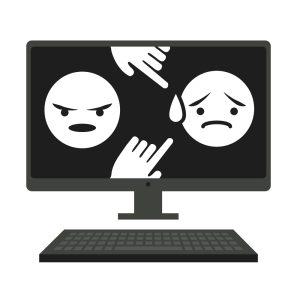EMDR is a powerful tool in helping others with trauma and grief. It helps process the bad memories or trauma and help individuals grow and heal. Please also review AIHCP’s Grief Counseling Certification by clicking here
grief
Counseling and Helping Others Through Shaming and Bullying
Grief Counseling: Estrangement and Grief with a loved one who dies
I. Introduction
Grief is a profoundly intricate process, particularly when intertwined with estrangement, as the emotional landscape becomes further complicated by unresolved issues and unspoken words that linger long after a loss has occurred. The death of a loved one prompts individuals to confront not only the overwhelming sorrow they experience but also the intricate complexities of their past relationships, which may be fraught with tension and regret. Traumatic bereavement, characterized by sudden and unexpected loss, evokes intense feelings of isolation and a profound loss of meaning in life, as highlighted in recent studies (Harris et al., 2020). Such losses can feel particularly jarring, drawing forth a whirlwind of emotions that many may struggle to articulate or understand. Additionally, those affected by the substance-related deaths of loved ones face unique grief challenges that compound their suffering, often marginalized by societal stigma that complicates their mourning process and makes them feel isolated even in their moments of greatest need (St. Cyr et al., 2019). This essay seeks to delve deeper into these complex themes of estrangement and grief, examining how psychological growth can emerge from such life-altering loss while highlighting the critical need for supportive interventions and understanding from others. The interplay of these dynamics is crucial in confronting and navigating the tumultuous waters of grief, ultimately fostering a more comprehensive path toward healing and resilience, reminding us that even in our darkest moments, growth and recovery are possible when we seek connection and support.

While this type of grief is by itself shocking even if the person is still alive, the permanence of never reconciling is even intensified when the loved one passes. Please also review AIHCP’s Grief Counseling Certification. Please click here
A. Definition of estrangement and its relevance to grief
Estrangement, defined as a profound emotional disconnection from significant others, often emerges in the context of grief following the death of a loved one. This state of alienation can significantly complicate the grieving process, leading individuals to feel even more isolated and misunderstood during their time of loss. The emotional turmoil of losing someone close can be intensified by the lack of supportive connections, as those grappling with their grief may find it difficult to reach out for help or comfort. Particularly when the relationship with the deceased was strained or marked by unresolved conflicts, survivors may grapple with complex and painful emotions, exacerbating their overall sense of grief and despair. The phenomenon of estrangement not only influences emotional well-being but also shapes social interactions; bereaved individuals may withdraw from their support networks, fearing judgment, misunderstanding, or the burden of their pain on others. This withdrawal can create a vicious cycle, where the very act of isolating oneself leads to heightened feelings of loneliness and despair. Research highlights that themes of isolation frequently arise in experiences of traumatic bereavement, underscoring how estrangement can manifest itself in the aftermath of sudden loss and complicate the healing process (Harris et al., 2020). Moreover, acknowledging the denial of rights associated with unclaimed bodies raises ethical questions about the dignity of those who have passed, further complicating the framework within which grief is understood and handled by the living (LOPES DS et al., 2024). Ultimately, the intersection of estrangement and grief reveals a complex emotional landscape that necessitates deeper exploration and understanding in both personal and clinical settings.
B. Overview of the emotional complexities involved in losing a loved one
Losing someone dear can get especially messy when estrangement is part of the mix; people end up wrestling with all kinds of feelings that don’t neatly settle into one box. When there’s no clear ending, you might find guilt, anger, and even a sense of relief bubbling up at once, really muddying the usual grieving process. Many personal stories show that keeping distance from a parent sparks an inner tug-of-war—self-care unexpectedly bumping into that deep, lingering need for closeness. Society’s old-school ideas about family bonds and how to mourn just add fuel to the fire, almost as if they ignore that estrangement really writes its own set of rules. And honestly, even tools like the DSM-5, which are supposed to help pin down Complicated Grief, often miss the tiny nuances of these unique emotional states (Mosko et al., 2015). When it comes down to it, navigating such an emotional maze usually means coming up with your own, tailor-made ways of grieving that honor both your personal journey and the twisty history of your relationships (Pedersen et al., 2019).
C. Purpose and significance of exploring estrangement and grief
Sometimes life’s unexpectedly tough moments come when grief and estrangement collide. When someone you love slips away, it’s not just about missing them—it’s about feeling that deep, sometimes confusing separation that tacks on extra layers of pain. Family breakups, for instance, can trigger bouts of anxiety and prolonged stress; these aren’t just passing moods but serious mental health challenges for those stuck with unsorted emotions ((Shaffer et al., 2024)). People find themselves in these situations—often because of heated family disputes or personal decisions—and the hurt they face resists easy explanation. Generally speaking, evidence hints that the fallout from estrangement seeps far beyond one relationship, slowly infecting the entire family unit ((Hall et al., 2024)). Look a bit closer and you see that such estrangement subtly shifts how we grieve, nudging personal healing off its usual track and sometimes opening new doors for therapy. In most cases, this tangled journey holds meaning not only for those on the front lines of clinical treatment but also for anyone trying to piece together the puzzle of loss.
II. Understanding Estrangement
Estrangement and grief come together in a rather tangled way—keeping some emotional distance can really complicate saying goodbye to someone we once cared about. When family bonds have already gone off track, loss tends to mix in a jumble of unsaid feelings and leftover regrets. Some research into how death affects those once-close but now distant relationships shows that people often hang onto little mementos of their lost loved ones, even when they’d drifted apart previously (Price et al., 2019). Holding onto these keepsakes seems to suggest that, in a quiet way, a connection still lingers; it weaves into the memories of the departed and even shapes how we see ourselves afterward. In most cases, Dan Moller argues that our effort to be tough in the face of grief can sometimes cut off our emotional ties to those we’ve lost, which might leave us a bit in the dark about our own needs and identities (Cholbi et al., 2019). All in all, digging into the role of estrangement might be key to untangling grief’s messy layers—blending sincere pain with a chance to rediscover who we really are.

Ultimately, estrangement itself present numerous struggles to an individual even if the person does not die. While alive, holidays and past memories can cause pain, while merely lacking whatever support the individual supplied, be it emotional or even financial. Death makes the estrangement even more permanent.
A. Factors contributing to estrangement in relationships
Sometimes, family rifts aren’t just about one single issue; they often emerge from a messy mix of factors that hit hardest when grief takes hold after losing someone close. Research, for example, generally shows that unresolved squabbles within a family can nudge people into drifting apart—even when everyone’s already reeling from a loss (Shaffer et al., 2024). In many cases, the struggle with grief only deepens these gaps; some findings even hint that folks might cling to keepsakes from departed relatives, almost as if those objects quietly hold onto unresolved feelings and familiar memories (Price et al., 2019). This tangled situation doesn’t just complicate the healing process—it can also leave behind long-lasting troubles like anxiety and ongoing stress. Overall, getting a real handle on these intertwined factors seems pretty key to easing both the pain of loss and the growing disconnects between family members.
B. Psychological impact of estrangement on individuals
Being cut off from someone close—especially when death is involved—can hit you hard and change how you feel deep down. Loss often comes tangled with feelings of loneliness and a need to protect yourself; the unresolved hang-ups and missing support only make it harder to grieve properly. Studies show, for instance (Harris et al., 2020), that after a sudden or violent loss, many people surprisingly find a kind of personal growth as they try to dodge society’s rough judgments about their pain. Kids face an even trickier situation; losing a bond so crucial can really throw off how they process grief, sometimes leading to what experts call Childhood Traumatic Grief. When young people don’t get enough support during these important years, it not only ups the immediate pain but also sets the stage for long-lasting challenges in handling any future losses (Kamp et al., 2013).
C. The role of unresolved conflicts in estranged relationships
When old conflicts linger in estranged bonds, grief tends to hit even harder when someone dear passes away. People often find themselves stuck dealing with past squabbles that just don’t seem to resolve—and those old issues can make letting go a real uphill battle. Many writings, in most cases, point out that these unresolved matters stir up waves of regret, guilt, and anxiety, which then slow down any real healing process (Shaffer et al., 2024). The emotional toll from being cut off from loved ones sometimes piles on long-term struggles like bouts of depression and an ever-present stress that seems to stick around (Shaffer et al., 2024). At times, the pain forces individuals to question not only who they are but also what their relationships actually mean, muddling the usual ways of coping with loss. In essence, not facing these old conflicts only deepens the overall experience of mourning. All in all, even if it feels messy and complicated, taking time to acknowledge and work through these unresolved issues is absolutely key to understanding the full picture of grief.
III. The Process of Grief

Grief can be a messy affair, especially when estrangement is thrown into the mix. People often find themselves caught between deep sadness and regret over relationships that never really bloomed, and sudden waves of relief or a need to protect themselves after losing someone dear. Research generally shows that when loss is sudden or even violent, survivors often end up feeling isolated and instinctively wary as they work through their emotions (Harris et al., 2020). Sometimes, personal stories of family neglect reveal that keeping distance—even from an ill parent nearing the end—can stir up a jumble of feelings that don’t fit neatly into traditional mourning. In the end, these tangled experiences push folks to put some self care first, prompting a fresh look at what we really mean by the grieving process.
A. Stages of grief and their manifestation in estranged relationships
Grief can get pretty messy, especially when you’re dealing with estranged connections and those unresolved feelings that just refuse to settle. It shows up in lots of ways – regret that seems extra sharp and a craving for a bond that never really took off, generally speaking. When you really look at it, grief isn’t merely about overwhelming sadness; it also ends up reshaping how you remember and relate to the one who’s gone. People who had already grown apart before their loved one died often find themselves caught up in memories of old conflicts and the chances they never took to make things right (Cholbi et al., 2019). Research even suggests that folks in these situations sometimes hang on to keepsakes and other meaningful items, as if clinging to the memory matters despite the past distance (Price et al., 2019). All in all, grief turns into a very personal, sometimes messy journey that forces you to reexamine who you are after the loss.
B. Unique challenges faced by those grieving an estranged loved one
Grieving the death of an estranged loved one presents a distinct array of challenges that can complicate the mourning process significantly and create a unique set of obstacles that are not often understood by others. While loss inherently evokes feelings of sorrow, the estranged individual often grapples with conflicting emotions, such as regret, guilt, and unresolved resentment, which can create a chaotic emotional landscape that is difficult to navigate. This emotional turmoil is further intensified by societal stigma surrounding estrangement, which can lead to feelings of isolation and self-protection as bereaved individuals find themselves grappling with their grief without adequate support from their friends, family, or community ((Harris et al., 2020)). According to research, bereavement experienced in the context of substance abuse or social neglect amplifies these feelings of disenfranchisement, as friends and family may feel uncertain about how to express condolences or support those left behind. This uncertainty can prevent an open dialogue about grief, leaving the bereaved in a state of confusion and loneliness, as they desire acknowledgment of their loss but often face dismissal instead ((St. Cyr et al., 2019)). Consequently, those grieving an estranged loved one may find themselves in a dual struggle—reconciling the complexities of their relationship while also contending with the profound impact of their loved one’s absence. This intricate blend of conflicting feelings can hinder the healing process, making it harder to find closure or to engage in healthy grieving practices, further perpetuating a cycle of unresolved grief and emotional distress that can linger for an extended period.
It should also be noted that many times, children are forced into estrangement issues. The two parties will take break up families. Hence children may no longer see their grandparent or aunt or uncle or other cousins. Many times, the children are victims of the actions of the adults and suffer from the loss of other family.
C. Coping mechanisms for dealing with grief in the context of estrangement
Navigating grief in the context of estrangement presents unique challenges that require tailored coping mechanisms specifically designed to address the complexities of such situations. When a loved one dies following a prolonged period of estrangement, individuals may grapple with a whirlwind of emotions, including unresolved conflict or guilt, which further complicates the already intricate grieving process. Adopting self-reflective practices, such as journaling, can prove invaluable, as it allows individuals to articulate their deepest emotions and confront lingering questions about their past relationships, facilitating a clearer understanding of their feelings. Additionally, engaging in support groups specifically focused on estrangement and grief might provide a communal space where individuals can openly share their unique experiences, thus fostering a sense of belonging and validation that is often sought after during such difficult times. It can be incredibly reassuring to connect with others who understand the nuances of one’s situation. Furthermore, therapeutic interventions, as emphasized in the findings noted in (Harris et al., 2020), underscore the importance of addressing psychological responses, which often include feelings of isolation, sadness, and a profound loss of meaning in life. These therapeutic techniques can guide individuals through their emotional turmoil by providing essential coping strategies. Ultimately, recognizing the multifaceted nature of grief, which is thoroughly discussed in (Fauth et al., 2022), allows individuals the opportunity to cultivate resilience, enabling them to navigate their personal journeys toward healing amid the loss and complexity of estrangement.
IV. The Intersection of Estrangement and Grief
Losing someone you never really felt close to can tangle up your grief in unexpected ways. It isn’t as if estrangement just disappears when a person dies; lingering emotions often muddle the whole mourning experience. Dan Moller points out that our tendency to bounce back after loss can sometimes blur our true understanding of both ourselves and the departed (Cholbi et al., 2019). In many cases, people who struggled with distant family bonds end up keeping the deceased’s belongings—each item acting as a quiet link back to a lost identity (Price et al., 2019). This practice, though a bit unconventional, offers a fresh, if imperfect, window into grief by challenging common ideas and nudging us toward a more personal, sometimes messy, insight into our feelings after loss.
A. Emotional turmoil stemming from unresolved feelings
The emotional turmoil stemming from unresolved feelings following the death of a loved one can manifest in numerous ways, profoundly impacting individuals’ mental health and relationships. This turmoil often seeps into various aspects of life, leading to a pervasive sense of unease that can hinder everyday functioning. Such emotional distress is frequently exacerbated by estrangement, as individuals grapple with complex feelings of guilt, anger, or regret about their last interactions with the deceased. For instance, research indicates that marriages can experience significant strain following the loss of a child, with couples frequently struggling to navigate their grief while simultaneously dealing with interpersonal conflicts that arise from incongruent grieving styles (Alexander et al., 1996). The challenge of reconciling one’s personal grief with a partner’s different emotional responses can create an isolating atmosphere, where both individuals feel unsupported and misunderstood. This dynamic can prolong emotional suffering, with unresolved feelings compounding the grief process and leading to a chronic state of mourning that can outlast the initial shock of loss (Ziebell et al., 1986). As these individuals remain caught in their unresolved emotions, the potential for healing diminishes significantly, leading to feelings of hopelessness and despair. This highlights the critical need for supportive environments that facilitate open and honest communication about grief and loss. Such support is essential in helping individuals confront their emotions constructively, ultimately aiding in the resolution of complex emotional turmoil and paving the way toward recovery and emotional resilience.
B. The impact of estrangement on the grieving process
The experience of estrangement profoundly complicates the grieving process, introducing layers of emotional turmoil that extend beyond the typical manifestations of loss. When an individual faces the death of a loved one with whom they had a strained relationship, the pre-existing feelings of isolation can be exacerbated, leading to a unique kind of grief that is often filled with conflicting emotions. This kind of grief is not purely about the loss of the person but also encompasses the unresolved issues and unfulfilled desires for connection that may have characterized the relationship. Research conducted on trauma and bereavement reveals that individuals who experience estrangement often retain personal items of the deceased, even if they were not in contact during life, as a means of connection to their past and self-identity (Price et al., 2019). This paradox sheds light on the complex interplay between loss and the desire for reconciliation, even posthumously, suggesting that the lingering memories and physical reminders can serve as both comfort and source of pain. Furthermore, findings highlight that feelings of self-protection, stemming from social stigma and isolation due to estrangements, can adversely impact individuals’ psychological growth and significantly complicate their healing (Harris et al., 2020). These individuals may grapple with not only their sorrow but also guilt or regret over what might have been, making the grieving process even more challenging. Thus, estrangement not only influences the nature of grief but also shapes the journey toward recovery, often requiring individuals to navigate through a labyrinth of emotions that can delay their ultimate acceptance and healing.
C. Case studies or personal narratives illustrating this intersection
The complex interplay between estrangement and grief is poignantly illustrated through personal narratives that highlight the emotional labor required to reconcile loss with unresolved relationships. These case studies reveal how individuals, despite feeling disconnected from a deceased family member, often find themselves clinging to memories, photographs, and cherished objects that evoke a sense of longing for what once was. An enlightening research project involving twelve participants delved into the significance of domestic artifacts and photographs following familial death, illustrating that even those who had experienced estrangement retained items from their lost loved ones as a means of maintaining a connection to their memories. For example, one participant described how a simple photograph of their estranged father, while it stirred feelings of unresolved conflict, also served as a reminder of the love they once shared, indicating that grief indeed complicates our understanding of relationships. These narratives underscore the notion that grief operates not only as a painful journey but also as a meaningful avenue for self-exploration and identity reformation, with individuals utilizing the grieving process to confront their emotional realities, which can be deeply intertwined with feelings of abandonment, resentment, and love. In this context, Dan Moller’s assertion about emotional resilience and its potential to sever connections becomes particularly relevant; grieving the estranged can evolve into a profound process of self-understanding. This emphasizes the nuanced dimensions of both estrangement and loss, illustrating that the emotional labor involved in reconciling these experiences can lead to personal growth and transformation (Cholbi et al., 2019), (Price et al., 2019).
V. Conclusion

In conclusion, the interplay between estrangement and grief following the death of a loved one reveals a complex emotional landscape that is often laden with unresolved feelings and questions about identity. The phenomenon of estrangement can significantly complicate the grieving process, as individuals grapple not only with feelings of loss but also with the emotional distance formed prior to death. This estrangement, as extensively highlighted in literature, can exacerbate mental health issues such as depression and anxiety, leading to a profound sense of grief that becomes intertwined with feelings of abandonment, regret, and guilt (Shaffer et al., 2024). While some may argue for the resilience that can follow significant loss, suggesting that emotional healing occurs much faster than one might expect, it is essential to recognize that this perceived resilience can create a troubling disconnection from the deceased. This disconnection can deprive individuals of critical self-insight into their grief journey, often making the process feel more isolating and confusing (Cholbi et al., 2019). Thus, understanding this intricate dynamic is crucial; it serves as a pathway for facilitating a meaningful reconciliation of one’s relationship with the deceased. Such an understanding can ultimately lead to a better appreciation of one’s emotions and the various stages of grief experienced from the moment of loss onward. Moreover, acknowledging the complexities of estrangement and grief can aid individuals in navigating their mourning more effectively, allowing them to foster a deeper self-understanding in the wake of loss. By doing so, they can better honor the memories of their loved ones while also nurturing their own emotional health, paving the way for healing that is both authentic and profound.
While living estrangement presents grief challenges, the death of a loved one who is estranged makes it permanent. While alive, memories and holidays hurt, as well as emotional support and company that once was, the event of death creates a permanent loss without closure or forgiveness. The death of an estranged family member can make the reality hurt even more. Please also review AIHCP’s Grief Counseling Training to learn more about helping others through grief.
A. Summary of key points discussed in the essay
Losing someone dear kicks off a mix of feelings that often go unnoticed, with estrangement and grief weaving together in unexpected ways. Family ties can break—especially when bonds with parents or children fall apart (Shaffer et al., 2024)—and, as a result, the impact on mental health can be heavy and all too real. Some newer ideas even say that it isn’t just the moment of death that leaves a void; isolation creeping in long before that final farewell can widen the emotional gap (Burkitt et al., 2019). Generally speaking, these shifting, sometimes messy relationships play a big role in how people face their sorrow, even if the whole process ends up feeling a bit unpredictable. A closer look at these broken connections hints that more in-depth study might uncover fresh paths for both therapy and personal healing. All in all, examining how estrangement and loss interplay shows us a rich, layered emotional landscape that deserves more attention than we usually give it.
B. Reflection on the importance of addressing estrangement in grief
Grief and estrangement often mix in ways that can really stir up trouble. Unresolved ties, especially among family members, tend to complicate the whole process of mourning, making it far from a simple goodbye. Sometimes, when you already have a rift before a loved one passes away, the loss comes with extra baggage—old conflicts and emotional distances that crop up unexpectedly, deepening the pain. I mean, in most cases, this tangled mix can spark serious mental health issues like anxiety, depression, and even chronic stress ((Shaffer et al., 2024)). Often enough, it seems that not only is the absence hard to bear, but the lingering family disputes and unhealed emotions add layers of complexity to grief. That’s why, generally speaking, diving into therapy becomes essential; it gives people a route to handle not just their sorrow, but also those convoluted feelings stemming from estranged relationships that might block real healing and closure ((Mosko et al., 2015)).
C. Final thoughts on healing and reconciliation after loss
Losing someone you love, especially when there’s been estrangement, can throw you into a swirling mix of emotions—sometimes messy, sometimes unexpected. People often find themselves wrestling with grief and old, unresolved issues that make the sting of separation even sharper. It’s not unusual for loss to bring up heavy feelings of guilt and regret, feelings that linger because family connections felt incomplete or broken. In many cases, research shows that estrangement might actually work as a kind of shield—protecting us from ongoing hurtful bonds while leaving behind a deep, hard-to-fill emptiness (Agllias K, 2017). The process of healing often means taking a long, sometimes awkward look at these fractured ties, allowing the natural chaos of grief to surface while slowly learning to honor the full story of one’s family history. Ultimately, admitting and working through the emotional fallout of estrangement can help a person find personal peace and even hint at ways to eventually rebuild connections that seem to outlast even death (Blake L, 2017).
Additional Resources
Kaytee, G. (2023). “The Complexity of Grief With Estrangement”. Psychology Today. Access here
Chapman, F. (2022). “5 Ways That Family Estrangement Can Inflict Lifelong Harm”. Psychology Today. Access here
Sabater, V. (2022). “Grief Due to Family Estrangement: The Pain of Broken Ties”. Exploring Your Mind. Access here
“The Grief of Estrangement” (2023). Hearts of Hope. Access here
Arab Americans and Grief Counseling Video Blog
Arab Americans face unique challenges and losses that grief counselors must be aware of. Cultural competency helps grief counselors understand the issues Arab Americans face and how their culture interprets loss and stress. Unique to Arab Americans is cultural differences with the West as well as stereotypes regarding Islam.
This video takes a closer look at these issues and how grief counselors can better assist Arab American clients. Please also review AIHCP’s Grief Counseling Certification as well as its Grief Diversity Certification. Both programs are online and independent study with instructor mentorship as needed
Role of Spirituality In Grief Video
Spirituality is usually a topic many secular counselors like to avoid but it is an inherent part of many individual’s lives and plays an even larger role in the grieving process. Spirituality generally is good for grieving but sometimes it can present issues that complicate grieving. Grief Counselors need to be aware of how spirituality can also complicate the grieving process and how to help individuals grieve in a healthy way. This video takes a closer look at these issues
Please also review AIHCP’s Grief Counseling Certification and see if it matches your academic and professional goals. The program is online and independent study and open to qualified professionals seeking a four year Grief Counseling Certification
Grief and Memory Video
The way grief memory imprints on the human brain is important because it helps keep the moment vivid and remembered for a long period. While during acute grieving this poses issues for healing, in the long term, it keeps the precious memories of the loved one intact far stronger. No-one wishes to lose the memory of a loved one. In fact, many go to lengthy processes to keep the memory alive. Keeping a certain object, clothing, or journaling are all ways individuals try to keep the memory strong. Fortunately the brain keeps it strong as well.

The Hippocampus and the Amygdala play a key role in keeping the emotion imprinted. The Amygdala processes emotion to the Hippocampus sometimes in intense ways that even bypass longer cognitive thought in a more direct route. The Hippocampus imprints these types of emotional images and for long term. The Cortex also imprints these images. Unfortunately, sometimes trauma and intense grief can cause PTSD where these images are fragmented and never properly processed. These are not the types of long term grief memories we want.
The video below discusses how grief and memory interact with other. Please also review AIHCP’s Grief Counseling Certification and see if it meets your academic and professional goals.
Maslow and Human Love/Loss
Fulfilled Need that Is Lost
Humanity in the fallen world has numerous needs to maintain existence. Among the most basic needs are food and water. Instinctively within human nature is a drive for to satisfy hunger and thirst, as well as drives to reproduce. These are natural evolutionary forces that push the human person to exist and perpetuate the species. In Abraham Maslow’s Hierarchy of Needs, Maslow lists basic needs of existence as the base of all needs. Following these needs are needs of safety and shelter. Beyond that is a more complex social need of belonging and love. Following this basic social need, is a mental need to perform and succeed in certain areas and talents that help manifest self esteem. Still even beyond those accomplishments, there needs to be a self actualization of self that recognizes one has met one’s fullest potential. Finally, after all these physical, social and mental accomplishments, one needs to find an existential or spiritual idea of meaning and tie that meaning into one’s life (Myers & Dewall, 2019, p. 351). Hence humanity has many needs to find completeness .

When these basic needs are denied or removed, one can experience a sense of loss. Human loss is more than merely losing a loved one but is an assortment of losses that range from the everyday minor issues to other losses that include home, shelter, job, career, relationships, or lack of success. Some of these loses are losses related to physical events, while other losses are more abstract, ambiguous or anticipated (Kastenbaum & Moreman. 2018, p. 374-375).
Attachment is key to any type of loss. John Bowlby observed that the greater the attachment to something, the greater the loss reaction (Kastenbaum & Moreman, 2018, p. 378). Hence grief is a simple formula of losing a vital attachment and learning to adjust without it. The problem is the adjustment. Especially when one considers the core of human needs includes love, being loved and belonging. When someone is ripped away from another, these needs are now unfulfilled and lead to an adjustment period referred to as the bereavement period. Ironically, there is no true period of grieving but a life long reaction to adjustment of the absence of that love. Some proceed through the adjustment period without pathology, while others are able to better cope.
Kubler Ross gave various stages to the adjustment of loss. Denial, anger, sadness, negotiating and acceptance became the 5 classic steps to grieving ( Kastenbaum & Moreman. 2018, p. 380). However, while these emotions clearly are part of the grieving process, one cannot neatly place grief into stages. Grief instead is messy. Grief oscillates from extremes and reverts back and forth between different emotions. (Bonano, G. 2019, p.40). Ultimately, the person must perform the needed grief work to adjust to the new status. The person must search for meaning in the loss (Wolfelt, A.
This is why Robert Neimeyer’s work on Meaning Reconstruction is so key to overall healing. Neimeyer looks to connect past, present and future, pre-loss and post-loss into one story of a person’s life. The loss must be incorporated into the full narrative of the human person (Worden, J. 2009, p. 5-6). This incorporates the loss more fully into the person’s existence and finds meaning in the loss itself. It also helps the individual realize that while the loss and absence of love physically exists, the continued bond in memory and in life itself still exists. The love that was shared is a part of one’s life and continues to shape oneself.
Maslow’s hierarchy of needs clearly illustrates the necessity of love, being loved and belonging, but when these things are torn away through loss, a serious grief reaction occurs and individuals need to understand how to cope and incorporate loss into life.
Motivation to Find the Beloved
In psychological studies, the person is driven by motivation. Motivation is defined as “need or desire that energizes and directs behavior” (Myers & Dewall. 2019, p. 349). In addition to genetic and evolutionary drives, one is also driven to certain goods via an arousal of the psychological state that looks to decrease that desire through obtaining or fulfilling it. This is referred to as Drive-Reduction Theory (Myers and Dewall. 2019, p. 349).

The need and drive finding the beloved after loss is definitely a natural and evolutionary urge. The process of bereavement helps the individual react and adjust through a series of emotions to understand the loss itself. This can be difficult at first to rationally understand, since emotionally charged events are first deciphered through Amygdala. This short road is far more emotional and reactionary to an initial loss (Myers and Dewall. 2019, p. 370). Charged emotions respond to this drive to find the lost or deceased person. This is why denial is so common when a horrible event occurs.
Emotion plays a large role in one’s appetites and how one is pushed towards or pulled away from an object. According to Myers and Dewall, emotion itself is the response of the whole organism from physiological arousal, expressive behaviors and conscious experience (2019, p. 369). Within the list of emotions, many scientists differ what are the core base emotions, but most concede that anger, fear, disgust, sadness and happiness are the basic human emotions (Myers and Dewall. 2019, p.369). Others also include interest, shame, guilt, as well as pride and love (Myers and Dewall. 2019, p. 369).
Obvious sadness is a key emotion related to loss. The desire to return to a normal state of existence and the inability to do so frustrates the will and the absence of the beloved causes intense sadness. Sadness as an emotion helps readjust but it also is beneficial as a social key in illustrating to others a sign of distress. Due to various cues of facial expressions one can infer another person is struggling (Bonano, G. 2019, p. 31). So while the bereaved is motivated internally and naturally to find the deceased, the function of sadness helps the person find adjustment and understanding overtime of the loss.
The drive to continue the bond with the deceased is not pathological, as past Freudian views pointed out ( Kastenbaum & Moreman. 2018, p. 379). Instead it healthy to continue the bond through spiritual practice or memorialization. Successful grieving in fact involves this continuation of the bond (Bonano, G. (2019, p. 140). However, there are limits to healthy continuation of the bond and pathological. Healthy coping will continue the bond in a non maladaptive way that accepts the loss and permits everyday existence but unhealthy bonding can be illustrated in cases such as clinging to possessions of the deceased (Bonano, G. 2019, p. 141). This clinging is far different than keeping a few objects, but this pathological reaction involves extreme hoarding of past possessions and refusal to move forward. In fact, in some cases, the room is left perfectly as was prior to the death (Bonano, G. 2019. p.140).
Hence one can understand the extreme motivational drive and need to maintain a bond with the deceased even after the death has occurred. It is a healthy drive but one that needs moderated.
Conclusion
Psychological needs to love, be loved, belong and maintain those bonds is a key drive within the human person. When these things are frustrated, the drive continues to push forward in the process of bereavement. Overtime, this drive adjusts but it takes time to adjust to loss.

Please also review AIHCP’s Grief Counseling Certification and see if it matches your academic and professional goals. The program is online and independent study and open to qualified professionals seeking a four year certification in Grief Counseling.
References
“Exploring Psychology” 11th Edition. Myers, D & Dewall, N. (2019). Worth Publishers: Macmillan Learning, NY
“Other Side of Sadness”. Bonano, G. (2019). Basic Books, NY.
“Death, Society and Human Experience” 12th Edition. Kastenbaum, R. & Moreman, C. (2018). Routledge, NY and London.
“Understanding Your Grief” 2nd Edition. Wolfelt, A. (2021). Companion, Fort Collins, CO.
“Grief Counseling and Grief Therapy”. 4th Edition. Worden, J. (2009). Springer Publishing Company, NY
Additional Resources
“Maslow’s Hierarchy Of Needs”. Mcleod, S. (2023). Simply Psychology. Access here
“The Value of Sadness”. Firestone, L. (2015). Psychology Today. Access here
“What is Attachment Theory? Bowlby’s 4 Stages Explained”. Ackerman, C. (2018). PositivePsychology.com. Access here
“16 Tips for Continuing Bonds with People We’ve Lost”. Williams, L. (2014). What’s Your Grief? Access here
7 reasons why healthcare professionals should achieve certification
 Written By Miranda Booher
Written By Miranda Booher
Hypnosis. Legal case management. Grief counseling. Stress management. Meditation. Spiritual counseling. There are many different areas of specialization when it comes to the vast realms of the healthcare industry.
Some allied health professional jobs require specific certification and others do not. However, if you happen to work in one of those positions that do not require specialized certification, do you really need it?
You are the only one who can make that decision for your career, but we are going to present you seven reasons why healthcare clinicians should achieve certification.
1. Gain advanced knowledge and skills in a healthcare sub-specialty
Physicians, nurses, and other allied healthcare professionals often get into the field because they have a passion or interest in a certain field of healthcare. Perhaps you are a nurse who has always been interested in the area of spirituality. Even if you are not currently practicing as a nurse in this field, you can increase your knowledge and skills to learn more just for curiosity’s sake, or to set yourself up for an opportunity to work in that specialty in the future.
2. Healthcare employers require certification more frequently
Healthcare facilities’, hospitals’, and other companies’ policies about continuing education requirements are constantly evolving. Some employers who never required a certification for their employees in the past have changed their practices and now make certification mandatory for a variety of reasons. Furthermore, there can also be laws made at the state level meant to keep the public safe that require allied health professionals to obtain and hold certain credentials.
3. Advance or expand your healthcare practice
Maybe you are a physician who wants to expand your current general practice roster of patients. Perhaps you want to offer specialized services to a certain segment of the population. Certification opens up doors as a healthcare provider to expand your practice and services to meet a wider range of patients and treat specific conditions and ailments.
4. Gain a competitive edge and increase your marketability
Perhaps one of the biggest reasons healthcare professionals obtain a certification is to increase their employability and gain a competitive edge in the industry. Having the certification itself does not guarantee job placement, however it can definitely give you an advantage when you apply for a job in the medical industry. Even if the particular job you are applying for does not require certification, having one related to the healthcare sub-specialty, i.e. intensive care unit (ICU), geriatrics, etc., shows your dedication and demonstrates your level of expertise.
5. Be viewed as a credentialed expert in your practice specialty
Certification in a certain area exerts yourself as an expert in the field. When you are nationally-recognized for the attainment of knowledge and skills by meeting specific predetermined criteria, it demonstrates your competency as an allied healthcare professional. This recognition may help you personally or professionally, it just depends on whether it means something to you to be viewed as an expert, or if you plan on taking that position to advance your healthcare career. It can also be a combination of both. You might also use this recognition to become a part of a professional group or network with other certified healthcare specialists that practice in your specialty.
6. Show employers you stay up-to-date
By its intrinsic nature, the medical field is an industry that is constantly changing. In fact, all of the changes that have been ushered in since the beginning of this pandemic are testament to this very fact. In order to stay on your toes, it’s important to keep up with all the changes the best you possibly can. Healthcare certification is the perfect way to do just that. Most certifications not only require the base of knowledge and skills to obtain the credential, but they also include a certain number of continuing education hours annually in order to renew it. This demonstrates to employers that you are a healthcare professional who cares about continuing education and keeping up with the best practices in the industry. If you were the employer, would you not prefer to hire someone who has proven expertise in the field?
7. It speaks to who you are as a clinician
Certification in healthcare is so much more than a piece of paper. It demonstrates who you are as a person and an allied healthcare professional. It shows that you are committed to the practice, your career, and to providing the very best patient care possible. Employers look for those qualities when they are considering hiring anyone in the healthcare industry.
Want to learn more about healthcare certification?
The American Institute of Healthcare Professionals is committed to providing opportunities for clinicians to expand their skills and knowledge base to advance their career in healthcare. You can learn more about each of the different types of certifications they provide by clicking on one of the links below.
- The American College Of Hypnotherapy
- The American Academy of Grief Counseling
- The American Academy of Case Management
- The American College of Legal Nurse Consulting
- The American Institute of Funeral Service Associates
- AIHCP Fellowship Programs
- Anger Management Specialist Certification
- Attention Deficit Consulting Certification
- Child and Adolescent Grief Counseling Certification
- Christian Spiritual Counseling Certification
- Crisis Intervention Counseling Certification
- EFT & Meridian Energy Health Tapping Certification
- The Emotional Freedom Technique Training Seminar
- Forensic Nursing Practice Certification
- Grief Christian Counseling Certification
- Grief Counseling Fellowship Program
- Grief Support Practitioner Certification
- Health Care Life Coach Certification
- Health Care Manager Certification
- Holistic & Integrative Health Care Practice Certification
- Meditation Instructor Certification
- Nursing Management Certification
- Nurse-Patient Educator Certification
- Pastoral Thanatology Certification
- Pet Loss Grief Support Specialist Certification
- Spiritual Counseling Certification
- Stress Management Consulting Certification
- Substance Abuse Practitioner Certification
Can Stress and Grief Kill You?
Stress, Grief, Pain and Excitement: Ingredients for Possible Death?
A broken heart, a sudden excitement, extreme stress or any trauma according to some findings have the ability to be fatal. Can stress really be the death of you?
Sophie Borland of Mailonline writes about this topic in “Why Shock Can Kill You: Release of Adrenaline After Sudden Recovery Can Lead To Heart Problems.”
“A shock can be fatal – and it makes no difference whether it’s the trauma of a loved one’s death or the excitement of a lottery win, experts claim.”
Read more: click here
If you are interested in controlling stress or stress management certification program, please review the program and click here
AIHCP
Grief Counseling and Issues of Attachment
Grief and Attachment
A lot of literature about grief is overwhelmingly death orientated. This is a good thing in that death is a universal experience but it is not an everyday thing. True, the loss of a loved one permeates one’s daily life long after the event, but the actual event is singular and for the more fortunate, not nearly as regular. The reality is most people go to counseling for relationship loss. Grief counselors deal with many people who are devastated by divorce, a cheating spouse, a broken engagement, or the sudden change of not having that person to call, hold, or spend time with. These aspects are very common to the human experience. With proper guidance, the wounds become scars and help one grow emotionally and sometimes spiritually.
The loneliness and the un-needed anxiety people experience in finding a mate can be stressful enough for some, but when one truly believes they found the one, only to be shocked that everything was an illusion can be a horrifying change. Changes in life style from the tiniest schedule can shake the foundation of that person’s life. Even the smallest scent or image can bring a tidal wave of emotional imagery. Unfortunately there are no short cuts in this adaptation period. As so many grief specialists emphasize, one must do their “grief work”. They must experience the change the emotional pain that accompanies it. Of course, as death, there is the acceptance stage, the emotional stage of anger and mourning, and the final adaptation to the new situation.
A good grief counselor will guide the broken person through these phases and encourage emotional release in the healing process. Only after these initial steps, can the person utilize new meaning concepts to a new reality and properly place the lost relationship in its proper perspective of his or her life story. The question arises why does this adaptation take so long for some people? It all varies based upon the level of attachment. Attachment theory is a theory that was used in great depth with widows or widowers in their loss of a spouse. The same can be applied to broken relationships that do not involve death, but separation. The attachment will determine the length of the adaptation to the person. So, if someone was in a relationship for many years and suddenly the relationship ceased, one should expect a greater withdrawal and more intense and lengthy adaptation period. The opposite can be said for a short two month affair where there is little attachment and hence less adaptation.
As a grief counselor, it is important not to only deal with death but also every day pains of the heart. Proper understanding of attachment can help one assess the situation and lay a ground work for eventually adaptation and assimilation of the past into the person’s present. One can never give a time frame for recovery, but with a special guidance, a grief counselor can help a person understand the phases and steps and help them take the necessary steps for a happy future with someone else. You can learn more about grief counseling, including available grief counseling courses and online study and training programs by doing an internet search for the American Academy of Grief Counseling.
Mark Moran, MA, GC-C, SCC-C






